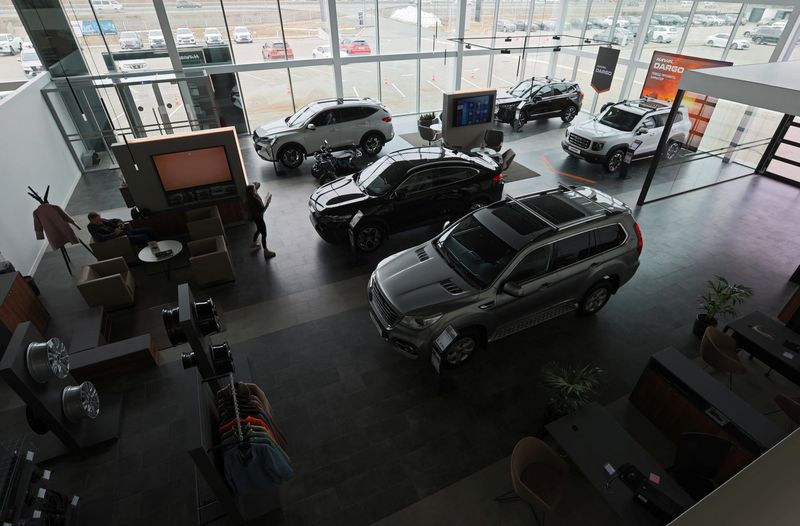By Gleb Stolyarov
(Reuters) -Russians purchased more Chinese cars in the first quarter of 2023 than Ladas, Russia's most popular, locally made vehicle, data showed on Thursday, evidence of Beijing's growing presence in Russia's economy as Western carmakers head for the exit.
The exodus of Western automakers is narrowing options for Russian consumers, who are having to get used to higher prices and Chinese brands, such as Haval, Chery and Geely.
In January-March, new sales of passenger and light commercial vehicles in Russia fell by 44.7% to 153,477 vehicles, based on data published on Thursday by the Association of European Businesses (AEB). March sales were 10.6% lower year on year at 48,414 vehicles.
Based on Reuters calculations, 64,483 of the cars bought in the first quarter were Chinese and 64,240 were Ladas, produced by Russia's largest carmaker Avtovaz. Market share for both Chinese brands and Lada exceeded 40% respectively.
Russia's auto industry had been heavily reliant on investment, equipment and parts from overseas and was hit hard by the fallout from Western sanctions and the carmaker exodus in response to Moscow despatching troops to Ukraine in February 2022. Sales of new cars plunged by 59% in 2022.
The Russian state has scooped up assets from the likes of Renault (EPA:RENA), Nissan (OTC:NSANY) and Toyota since then, often for a nominal fee.
Production of new cars in Russia has slumped to the lowest level since the collapse of the Soviet Union and prices for new vehicles have risen dramatically, sapping demand at a time when Russian consumers remain cautious about big-ticket spending.

Russia is now seeking investment and partnerships from what it calls "friendly" countries - those that have not imposed sanctions - and is trying to restart production at plants owned previously by Western carmakers.
The AEB previously forecast that sales would rise by 12% in 2023 to about 770,000 vehicles, well below the more than 1.6 million new vehicles sold in 2021.